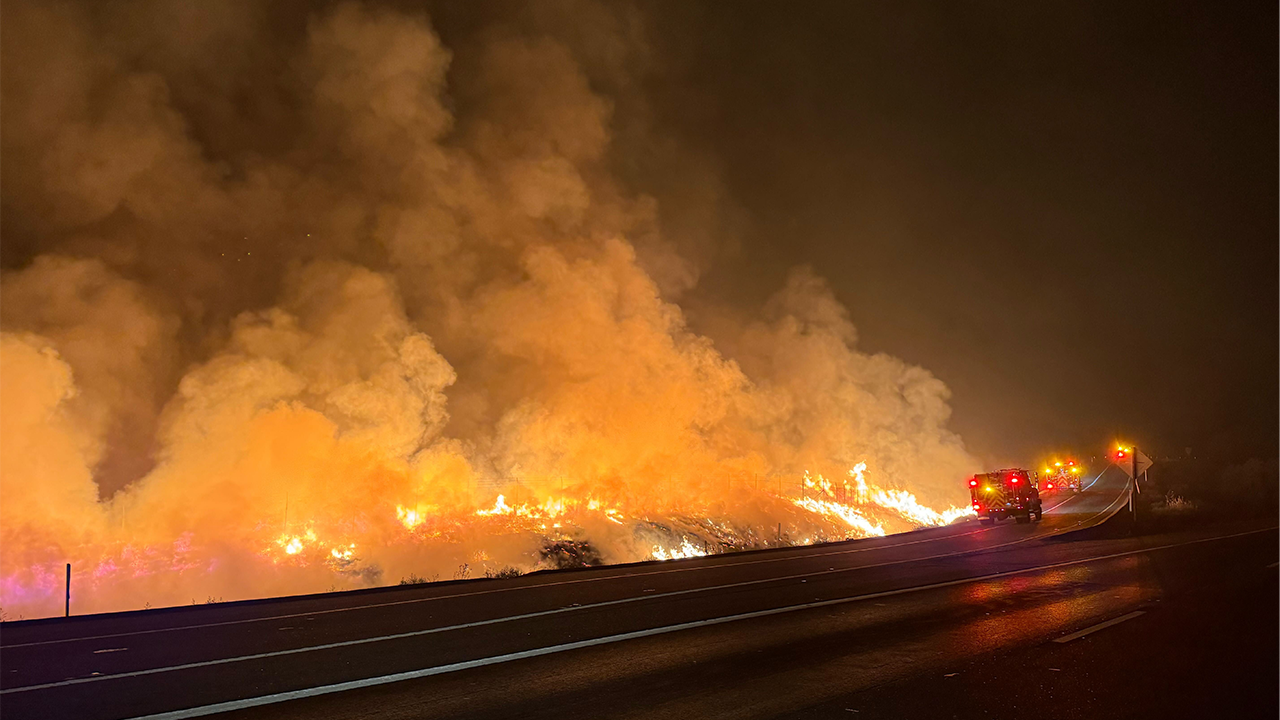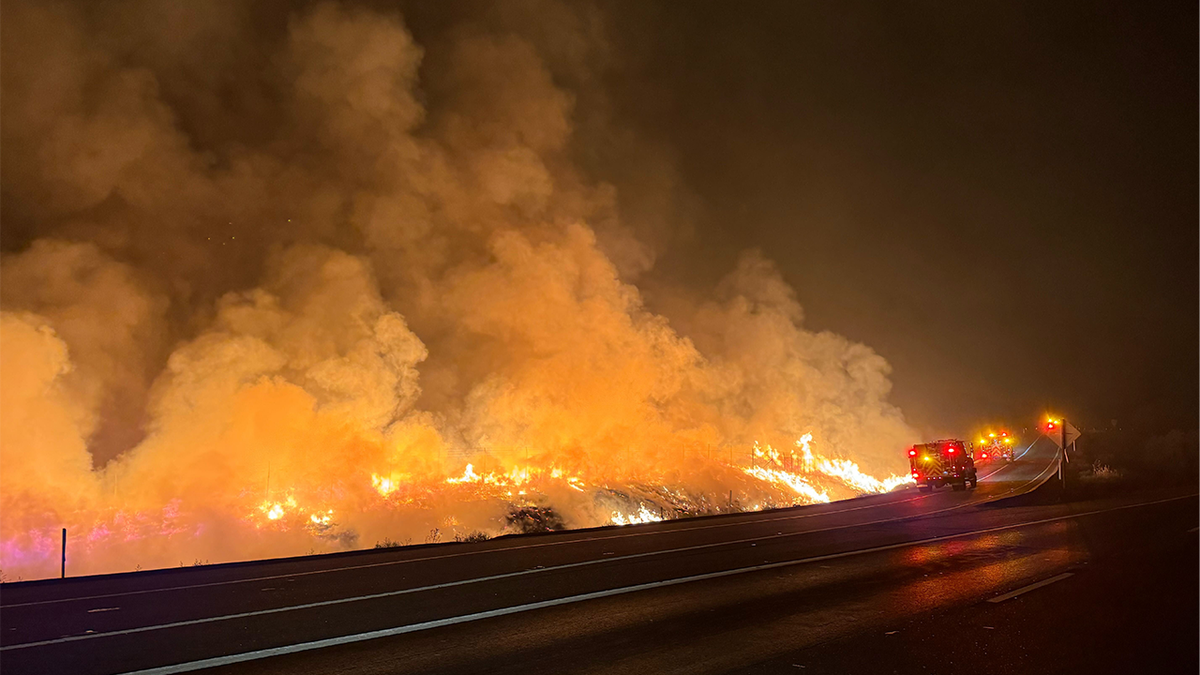California
Why California’s Public Universities Are So Good

It’s no surprise that Princeton and Harvard made the top 25 colleges, but despite California’s woes, four of its public universities did so too.
By Emma Whitford, Forbes Staff
California has had a rough few years. Wildfires, drought, flash flooding and mudslides have devastated parts of the state and driven away major homeowners insurance providers. Retailers are leaving San Francisco en masse and tech companies—including Meta, Slack, Salesforce and PayPal—are slowly moving jobs out of that city, subleasing or selling their office space in favor of remote work. Housing is unaffordable for many and homelessness is growing. Meanwhile, one California jewel continues to shine—its state college system.
Four of the University of California’s 10 campuses earned a spot in the top 25 on Forbes’ 2023 America’s Top Colleges list: the University of California Berkeley (#5); the University of California, Los Angeles (#7); the University of California, San Diego (#21); and the University of California, Santa Barbara (#24). All eight Ivy League colleges made the top 25, but only one other public school—the University of Michigan, Ann Arbor (#23) made that cut.
To be sure, flagship schools in other states rank highly—the University of Washington, Seattle Campus (#26); the University of Florida (#27); and the University of Virginia (#29). But no public university system dominates our list like California’s. Among our top 100 for 2023, 44 schools are public. But remarkably, 12 of those 44 are in California. Along with the four UC schools in the top 25, there’s University of California, Davis (#37); San Diego State University (#43); the University of California, Irvine (#61); the University of California, Riverside (#75); California Polytechnic State University, San Luis Obispo (#83); San Jose State University (#87); California State University, Fullerton (#90) and University of California-Santa Cruz (#92).
Despite some recent population decline, California is still by far the most populous state—around 39 million people call the Golden State home. Yet the state’s colleges still outperform when compared to publics in other big states. For example, Texas, home to 30 million people, counts just three public schools in the top 100—The University of Texas at Austin (#31); Texas A & M University, College Station (#50); and The University of Texas at Dallas (#97). New York, with a population of nearly 20 million, counts only two public schools —Binghamton University (#52) and Stony Brook University (#96)—in the top 100.
California can thank both history and Forbes’ methodology for its success. Our ranking approach, which we significantly revamped three years ago, is designed to identify schools that enroll students from across the socioeconomic spectrum who then go on to graduate, earn high salaries and become leaders in their fields, without spending their young adult years drowning in student debt.
As for the history part, California’s excellent public colleges are in part a “coincidence of when California happened,” explains C. Judson King, a former provost and senior vice president of academic affairs for the UCs and author of a book on the UC system. Prestigious east coast schools like Princeton University (#1), Yale University (#2), Columbia University (#6), the University of Pennsylvania (#8) and Harvard University (#9) had already been operating for more than a century in 1862, when Congress passed the Morrill Act granting states land that they could sell to establish public universities.
California was only admitted to the union in 1850—12 years before the Morrill Act—making its public colleges some of the first in the new state. “The fact that California’s emergence and its desires to build higher education coincided with the Morrill Act meant that the efforts were put into public higher education more than private higher education,” King says. “I’ll contrast that with, say, New York, or Massachusetts, or Virginia, where the need for higher education started much earlier—before the Morrill Act, before there were public universities.”
Like many other states, California slashed its funding of higher education in the wake of the Great Recession. With a 1988 voter-passed state proposition requiring adequate support for community colleges, the state’s four-year colleges were hit particularly hard. They responded by raising tuition. The highly ranked UCs, particularly Berkeley and UCLA, also raised their acceptance of out-of state students, who pay higher tuition than in-state residents, but less than the list price of fancy private colleges. Out-of-staters also flock to the top UCs for a different vibe. “Historically, California has been viewed as an alternative to the more rigid social world of the east coast, and its elite private universities, that has brought talent to UC and to the state,” observes John A. Douglass, a senior research fellow in public policy and higher education at Berkeley.
In more recent years, the state has beefed up its support for its colleges. According to the State Higher Education Finance report on spending in 2022, California’s per student state appropriations for higher education, adjusted for inflation, have risen 16.6% since 2001 and 62.5% since the grim days of 2012. Meanwhile, across the country, average appropriations are still 6.4% lower per student than in 2001 and up only 34.5% since 2012. Nevertheless, for such a high tax and high cost state, California is hardly an extravagant spender—it’s state appropriations per full time college student were $11,694 in 2022, above Texas’ $9,084, but lower than New York’s $13,897 and barely more than half of Illinois’ $22,970 per student appropriations.
The listed tuition for the top California UCs is relatively high, compared to other states’ universities. Tuition and fees for Berkeley this coming year total $15,602 for California residents and $48,176 for out-of-staters. (At private, #3 ranked Stanford, just across the Bay, the listed tuition for the 2023-24 academic year is $61,731, though students with financial need pay a lot less.)
Not surprisingly, Reddit is peppered with questions about how to establish California residency in order to qualify for in-state tuition, and the University of California maintains strict criteria to determine a students’ legal residency. Moving in with your Laguna Beach-based grandparents isn’t enough—to be deemed a California resident, undergraduates must either be dependent on parents in California for at least 366 days prior to the first day of instruction, or considered financially independent, which involves holding a California driver’s license, voter registration and for some, a California tax return.
Notably, part of California’s recent increase in state spending has been dedicated to direct grants for middle class residents as well as poorer students, holding down the percentage of California state students who borrow and their total debt. For example, only 33% of California four-year college students took out federal loans in 2019-2020, compared to an average of 44% in the rest of the U.S.
Not everything is hunky-dory in California, of course. The state is still struggling with a student housing shortage so severe that some students are living in their cars, and a planned further expansion of grants could be endangered by looming budget deficits. But for now, the state’s efforts and Forbes’ approach to ranking schools keep the California UCs near the top.
The methodology we used to identify the top 500 colleges for 2023, out of the thousands we considered, rewards schools that excel at enrolling, retaining and graduating students from across the socioeconomic spectrum, with a manageable amount of debt. These are graduates who go on to earn good salaries and make important contributions to society. You can read a full description of our methodology here.
While our ranking approach has been otherwise consistent for the past three years, we made one small Covid-related tweak this year—we opted to exclude 2020 data from our three-year average retention rate, instead using data from 2021, 2019 and 2018 to gauge what percentage of students typically stay at an institution after their first year. In 2020, many students opted to defer or take a leave of absence during the height of the pandemic when their colleges offered classes entirely online. Those deferrals caused many college retention rates to tank, especially at private schools where more students had the financial means to take a gap year. After disappearing from the top 10 last year, Harvard University has rejoined the group at No. 9, thanks in large part to the change in our retention rate measure.
One aspect of our methodology that helps California schools rank high: 15% percent of our rankings relates specifically to outcomes for recipients of Pell Grants, which go only to students from lower income families. Schools are rewarded for enrolling lots of Pell Grant recipients, retaining them to graduation and presenting a higher return on investment for these students—meaning the salaries they earn after graduation look good compared to the net cost of their schooling.
Among the eight Ivies, the share of Pell grant recipients ranges from 12% (at #9 ranked Harvard) to 23% (at #6 ranked Columbia). By contrast, among the four UCs in the top 25, the Pell range is 27% (at #5 ranked UC, Berkeley) to 33% (at #21 ranked UC, San Diego). At the highest rated state school outside of California, #23 ranked University of Michigan, Ann Arbor, just 18% of students get Pell Grants.
It’s worth noting that California publics have routinely enrolled low-income students without the help of affirmative action—state voters passed a proposition banning the practice in 1996. This immediately caused diversity at the UCs, and particularly at Berkeley and UCLA, to fall dramatically, pushing mostly lower-income Black and Hispanic students who might otherwise have enrolled in those schools to less highly ranked state colleges and reducing their post-graduation earnings, a 2020 study by a Berkeley economist found. (According to the data we used for the 2023 list, six years after graduation, Berkeley alums earn a median salary of $85,000—more than early-career graduates at University of Michigan-Ann Arbor, Amherst College, Cornell University and Brown University.) Since the end of affirmative action in California, the state has spent $500 million on programs to build diversity at the UCs, with only partial success.
But Berkeley and UCLA are only part of the story when it comes to serving all students. In 2022, nearly 1.6 million Californians attended one of the state’s schools of higher ed, compared to 1 million students in Texas public colleges, according to the State Higher Education Finance report. The biggest difference: California’s extensive two-year college system, which enrolled 908,000 students, more than double the number in Texas. Thanks to state subsidies, California has some of the most affordable community colleges in the nation. Even though Forbes’ list of top colleges only covers four-year institutions, that’s an achievement worth celebrating.
MORE FROM FORBES

California
US earthquake: Jolts of 3.5 magnitude rock South Pasadena; California wakes up to tremors

Things took a shaky turn on Sunday morning in the United States. According to the US Geological Survey, a 3.5 magnitude earthquake rocked the South Pasadena area.
Tremors struck the city in California just before 10 a.m. The USGS reported the seven-mile-deep quake hit about 2.3 miles north-northeast of South Pasadena and 2.4 miles east-northeast of Alhambra. Although no immediate damages or injuries were recorded, online accounts claimed that the earthquake was also felt throughout Los Angeles County.
NBC Los Angeles reported accounts of light shaking in San Gabriel Valley, parts of Los Angeles, Downey, Whittier, Studio City and Burbank.
Numerous social media users instantly took to their X/Twitter handles, sharing relatable memes as per the given situation. The Internet was all fired up, with Californians asking each other if they felt the tremors. Several netizens claimed that the quake was “short and heavy.” Due to the uncommonness of the phenomenon, people suggested how they weren’t used to the rattling.
Netizens react to the South Pasadena earthquake, sharing their experiences
@jmeucci wrote on X: “Eagle Rock checking in…that was the shortest but most violent #earthquake I’ve experienced yet. 😳”
@edgarrmcgregor tweeted: “Shaking lasted only 2 seconds, but the whole house shook.” Another post from the same user followed soon: “The reason why even small earthquake are frightening is because you have no idea what is truly coming. It could end in 3 seconds and we’ll forget about it tomorrow, or the Big One could be upon us. In that 2-20 second waiting game, your decision can mean everything.”
@PamelaChelin said: “OK, that #earthquake was scary and sent my dog running around fearfully.” In a follow-up tweet, she quipped at the situation and wrote, “Critics gave the earthquake a 3.5 stars out of 5, saying it was compelling enough to give audiences a jolt, but fizzled out quickly and left audiences underwhelmed.”
This is a developing story.
California
Corral Fire in California burns 11K acres, forces evacuations

A wind-driven wildfire in Tracy, California, burned 11,000 acres and forced many residents to evacuate on Saturday.
The Corral Fire was first reported around 2:30 p.m. east of Lawrence Livermore National Laboratory’s Site 300. It reached nearly 11,050 acres, with 13% containment, at 11:30 p.m., California Fire said on its website.
Residents east of Highway 580 between Corral Hollow Road and South Tracy Boulevard were the first to be instructed to leave by the San Joaquin County Office of Emergency Services, according to KTVU and CBS News.
The evacuations were then expanded to people living west of the California Aqueduct, west to Alameda County and south to Stanislaus County, the county office said on social media.
EX-CRIMINOLOGY PROFESSOR JAILED FOR 5 YEARS FOR ‘ARSON SPREE’ DURING DIXIE FIRES
Two firefighters suffered burn injuries on Saturday. (KTVU)
A temporary evacuation station was established at Larch Clover Community Center.
Two firefighters suffered burn injuries on Saturday, the Alameda County Fire Department said.
Site 300 houses facilities to support the development of explosive materials and hydrodynamic testing and diagnostics, according to the laboratory’s website. The facility assesses the operation of non-nuclear weapon components through hydrodynamic testing and tests new conventional explosives for use as part of the nuclear stockpile.
WILDFIRE WITH ‘ZERO CONTAINMENT’ CLOSES IN ON SMALL ARIZONA TOWN

A wind-driven wildfire in Tracy, California, burned 11,000 acres and forced many residents to evacuate. (KTVU)
CLICK HERE TO GET THE FOX NEWS APP
Winds in the hills west of Tracy were estimated at 20 to 25 mph, with gusting to 43 mph, according to the National Weather Service.
The cause of the fire is unclear.
California
California firefighters battle wind-driven wildfire east of San Francisco

SAN FRANCISCO — California firefighters aided by aircraft battled a wind-driven wildfire burning Saturday in an area straddling the San Francisco Bay Area and central California, authorities said.
Gusty winds have fueled the Corral Fire burning near the city of Tracy, 60 miles (96 kilometers) east of San Francisco, and the Lawrence Livermore National Laboratory in the city of Livermore, according to the California Department of Forestry and Fire Protection, or Cal Fire.
The blaze grew to 7 square miles (18 square kilometers) within hours, sending dark plumes of smoke high into the sky. It was 40% contained, Cal Fire said.
Interstate 580, which connects the San Francisco Bay Area to San Joaquin County in central California, was closed in both directions from Corral Hollow Road to Interstate 5 due to the lack of visibility from the smoke, the California Department of Transportation said in a statement.
The San Joaquin County Office of Emergency Services issued an evacuation order, pinpointing the wildfire in an area east of Interstate 580. Residents between Corral Hollow Road and Tracy Boulevard were ordered to leave their homes, with residents south of Tracy Boulevard told to be prepared for evacuation.
-

 News1 week ago
News1 week agoRead the I.C.J. Ruling on Israel’s Rafah Offensive
-

 News1 week ago
News1 week agoVideo: Protesters Take Over U.C.L.A. Building
-

 World1 week ago
World1 week agoHoping to pave pathway to peace, Norway to recognise Palestinian statehood
-

 News1 week ago
News1 week agoLegendary U.S. World War II submarine located 3,000 feet underwater off the Philippines
-

 World1 week ago
World1 week agoFamilies of Uvalde school shooting victims sue Microsoft, Meta and gunmaker
-

 Politics1 week ago
Politics1 week agoDefense Secretary Lloyd Austin to undergo nonsurgical procedure, Deputy Kathleen Hicks will assume control
-

 Politics1 week ago
Politics1 week agoHunter Biden attends pre-trial hearing in Delaware court on federal gun charges
-

 News1 week ago
News1 week agoHere are three possible outcomes in the Trump hush money trial : Consider This from NPR



















